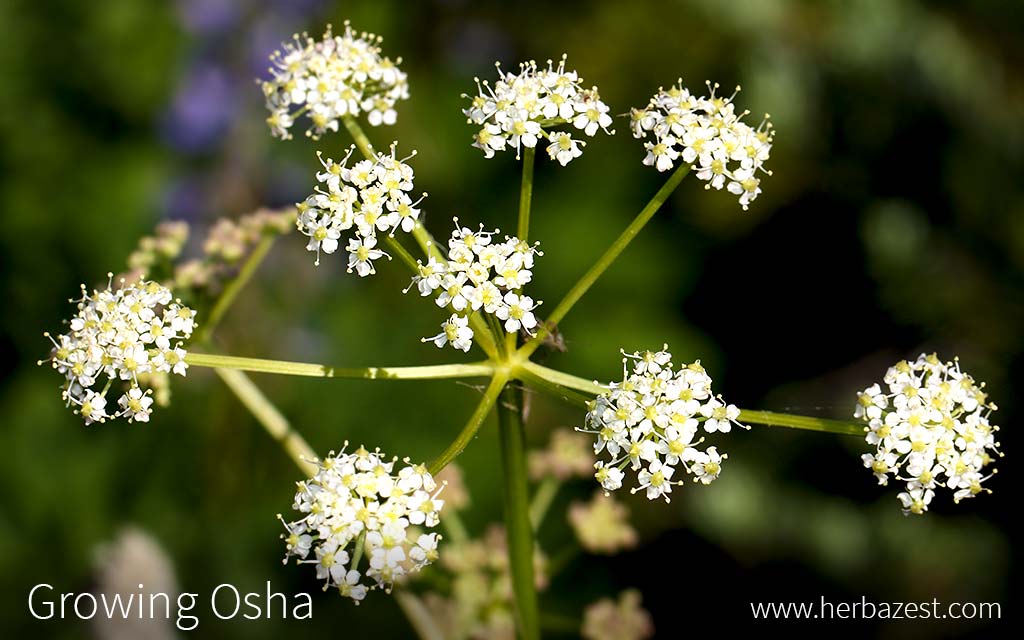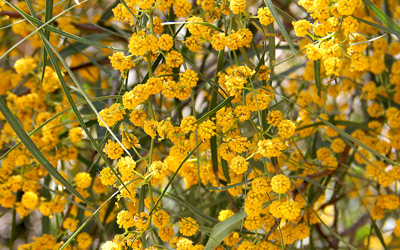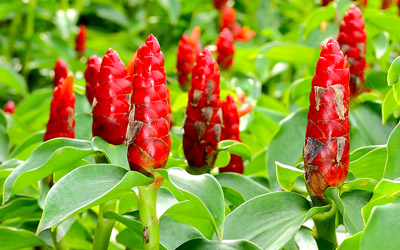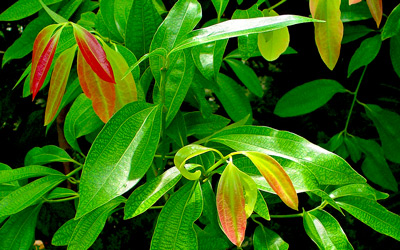Osha is native only to the Rocky Mountain range and the surrounding mountainous areas between western Canada right down to northern Mexico. It can be found in the wild there, however it is also possible to be cultivated successfully by those who have access to highlands.
1. Preparing the Soil
Osha plants are fairly hardy to most different types of soil, however it will thrive best in nutrient-rich, well-drained soil. If this is not available, application of a layer of organic matter can help to ensure the plant has access to a good amount of nutrients. The leaves of the aspen tree in particular, work as an effective mulch, so planting osha in an area where these stand is advantageous if possible.
2. Planting
Planting Osha Outdoors
After a suitable area has been located, osha seeds should be planted close together. This is because it will allow the roots of each plant to intertwine and form a tangled mass, which leads to added support for the plants. They should be sown around 1/4 inch (6.4 mm) below the surface of the soil, so they have access to some sunlight in order to germinate.
Osha is not very sensitive to cold weather, being hardy to at least 5F (-15C). It should be planted before winter fully sets in, ideally in fall - between September and October. Seedlings usually emerge in mid-late May.
3. Plant Care
Watering
Immediately after planting the seeds in autumn, a generous amount of water should be applied. After this, osha does not require any further irrigation until mid to late spring - late April to early May - just before the seedlings emerge. Once established, around 1/2 inch (1.3 cm) of water per week will be enough. A layer of mulch should help to ensure the soil stays moist, however increased amounts and regularity of watering is beneficial during the warmer summer months.
Osha is considered a hardy plant and it will still grow without regular irrigation; however, it will not flourish to the same extent.
Fertilizing
Application of some organic matter will usually supply an adequate amount of nutrients to the osha plants, rendering synthetic fertilizers unnecessary. Having said this, if the plants look to be struggling, fertilizers can be used to give them an extra boost. This is more likely to be the case after a year or two, when the plants are well-established.
Pruning
Osha is a wild plant which generally does not require human intervention to grow successfully. It is not necessary to prune the plant to encourage extended growth; however, if harvesting the leaves, more will develop.
Weed Control
Weeds occur naturally in the wild and osha itself is often considered to be one. The presence of others in the vicinity of the plant will not necessarily harm it, however it may decrease its production rate by around 25%. To avoid this, herbicides can be applied when the osha plants are well established - using of weed killer is likely to be detrimental to young plants. Hand removal of weeds is the only safe method when osha is at the seedling stage.
4. Pest & Disease Control
Pests
Osha is affected by a range of common pests in the wild, one of the most apparent being Cavariella aegopodii - also known as the 'willow-carrot aphid'. This particular type of aphid extracts sap from the leaves, flowers and stem, leaving the plants diminished and weak, eventually causing them to die.
Because osha grows only on mountains, it can be difficult to administer pest control - which means that infestations are likely to spread among neighboring plants. Pesticides can be used on well-established osha plants to tackle these, but unfortunately hand-removal is the best option for younger plants that are likely to be harmed by harsh chemicals. Ideally, plants should be removed as soon as aphids - or other insects - are spotted, thereby hindering spread.
Diseases
Osha is fairly hardy to most plant diseases, because of the antimicrobial activity in its roots. However, it can become infected, particularly if there is an aphid infestation - because aphids are often a host for various viruses and diseases. Early detection and removal of contaminated plants is the optimal solution, as this should stop the problem from escalating.
Wildlife
Bears are one of the most well-known gatherers of osha in the wild. The plant's alternative name - bear root - is derived from the fact that Native Americans had seen bears forage for the plant and eat its roots. This remains the case today, and it is the reason why many experts recommend that those wanting to harvest the plant in the wild should do so in the afternoon, because bears are more likely to be present in the morning.
Other animals known to consume osha include small mammals such as beavers, squirrels, and chipmunks.
5. Harvest
It is possible to consume the roots, leaves, flowers and stem of the osha plant, however the roots are the most desired component as they possess the most medicinal properties. It is recommended that the plants should not be harvested until between their third and fourth year. Removal of leaves and flowers will allow more room for younger, neighboring plants to develop, which can be advantageous in encouraging a higher yield.
In order to sufficiently protect the roots for use, hand harvesting is advised.6. Storage
To preserve osha for later use, the leaves, seeds, and roots should be dried - preferably overnight - until the components become crisp to touch. This will prolong its shelf life which is up to around one week if left fresh.
An alternative method of preservation is to make a tincture by crushing all parts of the plant and cover them with alcohol of at least 80 proof (40% volume). This preparation have a long shelf-life when kept in a cool, dark place.
Osha is unique in that it can only grow at high elevations. If such a position for cultivation is accessible, this medicinal plant can flourish with minimal human intervention, making it even more attractive to those who are aware of its potential health benefits.





